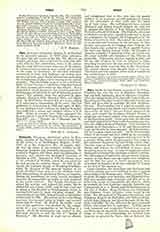

Nerinckx, CHARLES, missionary priest in Kentucky, founder of the Sisters of Loretto at the Foot of the Cross, b. in Herffelingen, Belgium, October 2, 1761; d. at Ste. Genevieve, Mo., August 12, 1824. He was the eldest of the fourteen children of Dr. Sebastian Nerinckx and Petronilla Langendries. He studied at Enghien and Gheel, made his philosophy at Louvain, and entered the theological seminary of Mechlin in 1781. Ordained in 1785, he became vicar at the cathedral of Mechlin, where he was noted for his zeal among the working classes. In 1794 he obtained the pastoral charge of Everberg-Meerbeke, where the devotion to the spiritual interest of his people developed that deep love for children which later characterized his missionary labors in America. During his incumbency he wrote several theological treatises the manuscripts of which are still preserved in the parish archives. The French Directoire resented his activity and ordered his arrest, but he eluded the gens d’armes (1797) and for four years was in hiding at the Hospital of Dendermonde, where he continued his ministry amid continual dangers. He came to America in 1804, Bishop Carroll assigning him to Kentucky in 1805. The district given to his charge was over two hundred miles in length and covered nearly half the State. He lived in the saddle; every year of his apostolate was marked by the organization of a new congregation or the building of a church. Of all the missionaries who worked in that field none deserves so well the title of “Apostle of Kentucky“. His direction of souls was so efficient and enlightened that to this very day the grand-children of his penitents are still prominently. Known for the earnestness of their faith and the solidity of their virtue. His well-deserved fame reached Baltimore and Bishop Carroll induced the Holy See to appoint him Bishop of New Orleans, but Father Nerinckx refused the honor. The Catholic education of children was his most cherished work and to secure its permanency he founded the Congregation of the Sisters of Loretto in 1812. He crossed the ocean twice to secure help and laborers for the missions; he thus became instrumental in bringing from Belgium the first Jesuits who settled in the West, notably Father De Smet and Bishop Van de Velde. He brought to America a number of paintings which are to this day the most valuable art treasures of the Diocese of Louisville. Persecution was not wanting to him, and for the sake of peace he went to Missouri in 1824, intending to consecrate the last years of his life to the Indians, but death overtook him at Ste. Genevieve. His mortal remains were brought back to Loretto. The Sisters erected a marble statue of their founder at the motherhouse in 1910.
CAMILLUS P. MAES

